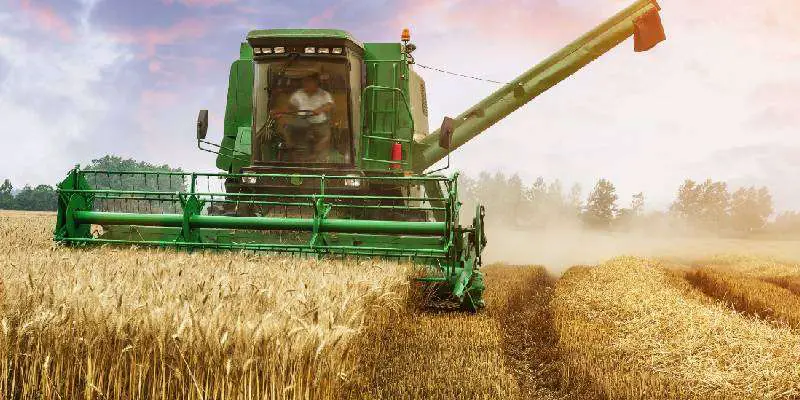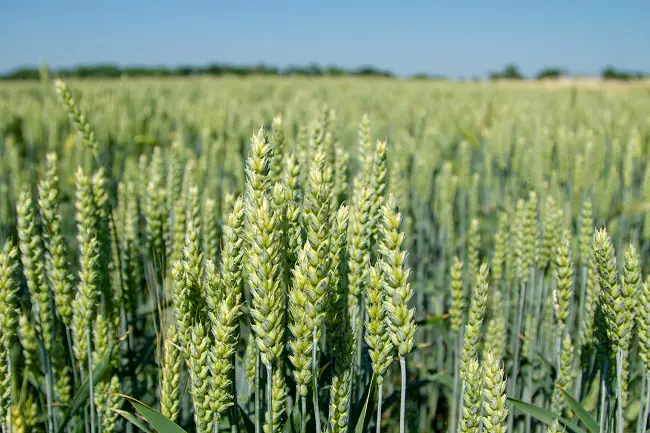Barley is one of many cereals that are being grown at both subsistence and commercial farming levels. Some plant barley for cereals for their homes while some do it for selling to malting companies. Barley is grown and harvested when it is ripe. Proper grading and storage is also very important so that the quality is maintained especially for malting purposes.
In this article we need to look at when is it recommended to harvest barley, how do people know that barley is ready for harvest. We also would like to look at barley harvesting methods. Generally barley harvesting is not a very complicated process. It all depends on the availability of barley harvesting equipment which can simplify the process. Many cereals like barley can also be harvested with aid of machinery when they are ripe.
Contents
How Do One Know That Barley Is Ready For Harvest
This is one of the most important questions that requires answers. The quality and quantity of barley is very much dependent on the timing of the harvesting process. Good timing of barley harvesting is necessary for a better yield and quality. Let us look at the ways to know that barley is ready for harvest.
- Barley color. The barley should look golden when ripe and ready for harvest. You should see this color change from green.
- The heads should be totally bent, this confirms that the moisture level has dropped to the required levels which typically should be between 10-12%. Harvesting the barley with a very low moisture content makes it easy to cut the dried plant. Moisture can also be determined by using an electronic moisture tester.
- Usually barley seeds should be hard to dent with thumbnail when ripe and ready for harvesting. They should crack when you bite them.
These are general ways of identifying whether your barley is ready for harvesting or not. Wrong timing of barley harvesting should be avoided as it reduces yield of the cereal crop.
How To Harvest Barley
There are different ways of harvesting barley. This is largely determined by the size of the field being harvested. Small areas or fields can be harvested manually while large areas or fields will require mechanized or automated harvesting equipment. We shall look at these two harvesting methods in detail below.
Manual Barley Harvesting
Manual barley harvesting is mainly done using sickle. This method is very ideal in cases where barley fields are small. It can also be used when harvesting barley for your cooking cereal at home. Manual harvesting involves a person cutting the barley stalks with a sickle while holding the top grain with another hand. Caution should be exercised as the sickle can cause injuries. The cut stalks are collected and piled at same place for further processing prior to storage.
Usually the barley is allowed some time to further dry completely for a period of around three weeks. The drying time can also be affected by the amount of moisture in the barley harvested. After completely drying, the barley is then taken to the threshing floor for threshing and winnowing where barley grains are separated from barley stalks and collected for storage. This method is labor intensive and very tiresome.
Mechanized Barley Harvesting
This is the second method of harvesting barley and it is most ideal for large barley fields. In this process a combine harvester is used to do the harvesting, threshing and winnowing of the barley grains. The machine will be driven around the field and properly set to the correct cutting height. The harvester automatically cuts and separates barley grains from their stalks. This method is very easy due to automation and is light. However, this method is very costly considering the hiring of equipment and fuel costs despite being efficient and quick.
Barley Storage
After harvesting the barley, the next and most important process is storage. Many people lose a very significant amount of this important cereal due to poor storage habits. After all the labor invested in growing, caring and harvesting of your barley, losing some of it should be avoided during storage. Below are some of the best practices for barley storage.
- Storage bins. Barley storage bins should be cleaned and make sure they are dry prior to use them for barley storage. For large bins, you may opt to hire cleaning services to make sure that your bin is clean and dried. This helps to avoid your grain contamination which may affect your grain in the near future.
- Disinfect your storage bins. The next thing you should do is to disinfect your storage bin a few days before storing your barley. This is to kill all the bacteria or microorganisms that may attack your barley during storage. Always use natural insecticides so that chemicals do not contaminate your barley grains.
- Keep your bin temperatures around twenty degrees to discourage mold and other infestations from occurring.
- After that you may store your barley in your bin for years without any problem. For large silos, a fan should always be connected and running to improve air circulation which helps keep barley in good condition.
These are the steps for ensuring that your barley is properly stored.
What Are The Uses Of Barley
Barley has got many uses in different industries and at house hold levels. Barley can be processed for malting purposes. Brewing industry is everywhere and is a ready market for barley. Secondly barley can be processed for making animal feeds. Barley can also be a base for different animal feeds due to its nutritional content when combined with other preservatives. Many animals like cattle and sheep can feed on feeds based on barley. Barley can also be processed for use as a cereal for home cooking.
Conclusion
Barley harvesting can be an easy and quick process depending on the method used. It is however important to understand the harvesting and storage processes so that quality of barley is not compromised.




